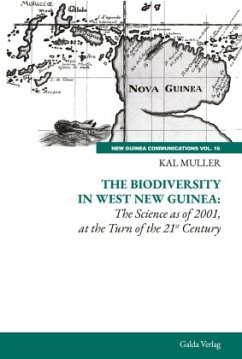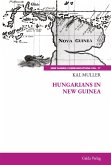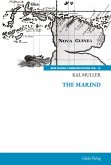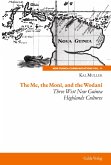The Biodiversity of New Guinea covers the situation as it was in the year 2001. It is divided into three main sections. Section One comprises the biodiversity of the entire island of New Guinea, PNG and WNG. Section Two concentrates on the Timika area and the Lorentz National Park/World Heritage Site. Section Three lists the plants and animals the Kamoro ethno-linguistic group uses from the natural resources available to them. This volume, researched in 2003 was written in the town of Timika (south coast of WNG) where the author had easy access to the ample material generated by the Environmental Department of Freeport Indonesia, the mining company that employed the author. Among much material on the biodiversity of PNG, J.L. Gressit's Biology and Ecology offered great help. Research on WNG was made difficult by the grueling process in obtaining the necessary government permits, but provided an invaluable sources in a two-volume Ecology of Papua. After the introduction, SectionOne treats the following topics: Basic Influences (geology, the Ice Ages, and landforms); Plant and Animal Life; Origins of New Guinea Animals; Molluscs; Crustacea (shrimps, crayfish, and crabs); Insects (butterflies and beetles); Fresh Water Fishes; Amphibians (frogs and toads); Reptiles (snakes, turtles, crocodiles); Birds (in different environments); Mammals. Section Two includes Vegetation; Insects; Fresh Water Fishes; Amphibians and Reptiles; Birds and Mammals. Section Three concentrates on the name of plants and animals used by the Kamoro. An Appendix lists animals with their Latin, English, Indonesian, and Kamoro designations. Much new research has given ever-increasing information about the various animal groups during the past two decades. The author has made only a few updates on the frogs, thanks to Dr. Steve Richards. The other chapters were left largely as in the original text. Some mysteries remain such as the date of the first arrival of pigs that can differ by 2,000 years. One of the newest discoveries, this one by C. Austin, revealed that the world's smallest frog was incidentally also the world's smallest vertebrate. Named Paedophyrne amanuensis, the little fellow measures seven to eight mm and weighs in at 0.01 grams.
Hinweis: Dieser Artikel kann nur an eine deutsche Lieferadresse ausgeliefert werden.
Hinweis: Dieser Artikel kann nur an eine deutsche Lieferadresse ausgeliefert werden.









